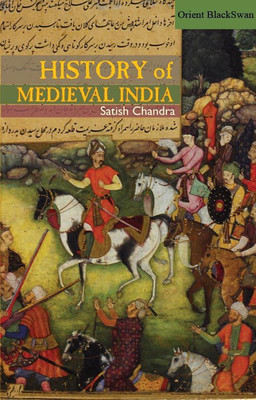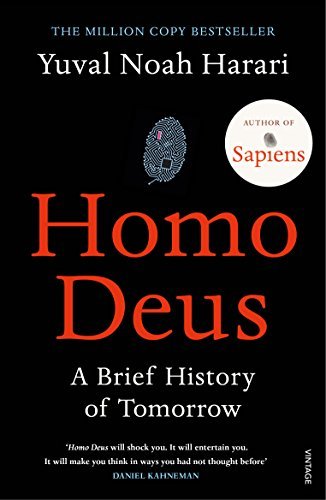| 1. India AND THE WORLD : - Europe; The Arab World; Africa
2. Northern INDIA : AGE OF THE THREE EMPIRES (800-1000) : - The Struggle for Domination in North India : The Palas; The Pratiharas; The Rashtrakutas; Political Ideas and Organisation
3. South INDIA : THE CHOLA Empire (900-1200) : - The Rise of the Chola Empire; Age of Rajaraja and Rajendra; Chola Government-Local Self Government; Cultural Life
- 4. ECONOMIC AND SOCIAL LIFE, Education AND Religious BELIEFS (800-1200) :
- Trade and Commerce; Nature of Society; the Caste System; Condition of Women; Dress, Food and Amusements; Education, Science and Religious Learning; Religious Movements and Beliefs
5. THE AGE OF CONFLICT (CIRCA 1000-1200) : - The Ghaznavids; the Rajput States; the Turkish Conquest of North India; the Battle of Tarain; Turkish Conquest of the Ganga Valley; Causes of the Defeat of the Rajputs
6. THE Delhi SULTANAT-I (CIRCA 1200-1400) : - The Mameluk Sultans (Thirteenth Century); Struggle for the Establishment of a Strong Monarch); Iltutmish (1210-36); Raziya; Era of Balban (1246-87); the Mongols and the Problem of the Northwest Frontier; Internal Rebellions and the Struggle for Territorial Consolidation of the Delhi Sultanat
7. THE DELHI SULTANAT-II (CIRCA 1200-1400) : - The Khaljis and the Tughlaqs; the Khaljis (1290-1320); the Tughlaqs (1320-1412); Expansion of the Delhi Sultanat; Internal Reforms and Experiments Muhammad Tughlaq's Experiments; Decline and Disintergration of the Delhi Sultanat : Firuz and his Successors
8. GOVERNMENT, AND ECONOMIC AND SOCIAL LIFE UNDER THE DELHI SULTANAT : - The Sultan; Central Administration; Local Administration; Economic and Social Life; Peasants and Rural Gentry; Trade, Industry and the Merchants; the Sultan and the Nobles; Town Life : Slaves, Artisans and Others; Caste, Social Manners and Customs; Nature of the State; Religious Freedom under the Sultanat
9. THE AGE OF Vijayanagara AND THE BAHMANIDS, AND THE COMING OF THE Portuguese (CIRCA 1350-1565) : - The Vijayanagara Empire-Its Foundation and Conflict with the Bahmani Kingdom; the Bahmani Kingdom-Its Expansion and Disintegration; Mahmud Gawan; Climax of the Vijayanagara Empire and its Disintegration; The Advent of the Portuguese
10. STRUGGLE FOR EMPIRE IN NORTH INDIA-I (CIRCA 1400-1525) : - Eastern India-Bengal, Assam and Orissa; Western India-Gujarat, Malwa and Mewar; Mahmud Begarha; Malwa; Mewar; Northwest and North India-the Sharqis, the Lodi Sultans and Kashmir; Kashmir
11. CULTURAL DEVELOPMENT IN INDIA (1300-1500) : - Architecture; Religious Ideas and Beliefs; the Sufi Movement; the Chishti and Suharwardi Silsilahs; the Bhakti Movement; the Vaishnavite Movement; Literature and Fine Arts; Fine Arts
12. STRUGGLE FOR EMPIRE IN NORTH INDIA-II Mughals AND Afghans (1525-1555) : - Central Asia and Babur; Conquest of India; the Battle of Panipat (20 April 1526); the Battle of Khanwa; the Afghans; Significance of Babur's Advent into India; Humayun's Conquest of Gujarat and his Tussle with Sher Shah; Sher Khan; Sher Shah and the Sur Empire (1540-55); Contribution of Sher Shah
13. CONSOLIDATION OF THE Mughal EMPIRE AGE OF Akbar : - Early Phase-Contest with the Nobility (1556-67); Early Expansion of the Empire (1560-76); Administration; Mansabdari System and the Army; Organization of Government; Relations with the Rajputs; Rebellions and Further Expansion of the Mughal Empire; Towards Integration : State, Religion and Social Reforms
14. THE Deccan AND SOUTH INDIA (UP TO 1656) : - Mughal Advance Towards the Deccan; Conquest of Berar, Ahmadnagar and Khandesh; Rise of Malik Ambar and Frustration of Mughal Attempt at Consolidation; Extinction of Ahmadnagar, and Acceptance of Mughal Suzerainty by Bijapur and Golconda; Cultural Contribution of the Deccan States
15. INDIA IN THE FIRST HALF OF THE SEVENTEENTH CENTURY : - Political and Administrative Developments in India; Nur Jahan; Shah Jahan's Rebellion; Mahabat Khan; Foreign Policy of the Mughals; Shah Jahan's Balkh Campaign; Mughal-Persian Relations-the Last Phase; Growth of Administration : Mansabdari System and the Mughal Army; The Mughal Army
16. ECONOMIC AND SOCIAL LIFE UNDER THE MUGHALS : - Economic and Social Conditions; Standard of Living : Pattern of Village Life and the Masses ; The Ruling Classes : The Nobles and Zamindars; Zamindars and the Rural Gentry; The Middle Strata; Organization of Trade and Commerce; Foreign Trade and the European Traders
17. CULTURAL AND RELIGIOUS DEVELOPMENTS : - Architecture; Painting; Language, Literature and Music; Music; Religious Ideas and Beliefs, and Problems of Integration
18. CLIMAX AND DISINTEGRATION OF THE MUGHAL EMPIRE-I : - Problems of Succession; Aurangzeb's Reign-His Religious Policy; Political Developments-North India; Northeast and East India; Popular Revolts and Movements for Regional Independence : Jats, Afghans and Sikhs; Relations with the Rajputs-Breach with Marwar and Mewar
19. CLIMAX AND DISINTEGRATION OF THE MUGHAL EMPIRE-N : - The Rise of the Marathas; Early Career of Shivaji; Treaty of Purandar and Shivaji's Visit to Agra; Final Breach with Shivaji-Shivaji's Administration and Achievements; Aurangzeb and the Deccani States (1658-87); The First Phase (1658-68); The Second Phase (1668-84); The Third Phase (1684-87); Aurangzeb, the Marathas and the Deccan-the Last Phase (1687-1707); Decline of the Mughal Empire-Responsibility of Aurangzeb
20. ASSESSMENT AND REVIEW | 
 SPIN & WIN
SPIN & WIN








![32% OFF on The Gene: An Intimate History [Paperback] Mukherjee, Siddhartha 32% OFF on The Gene: An Intimate History [Paperback] Mukherjee, Siddhartha](https://m.media-amazon.com/images/I/41+tK-LKgfL._SL500_.jpg)





































